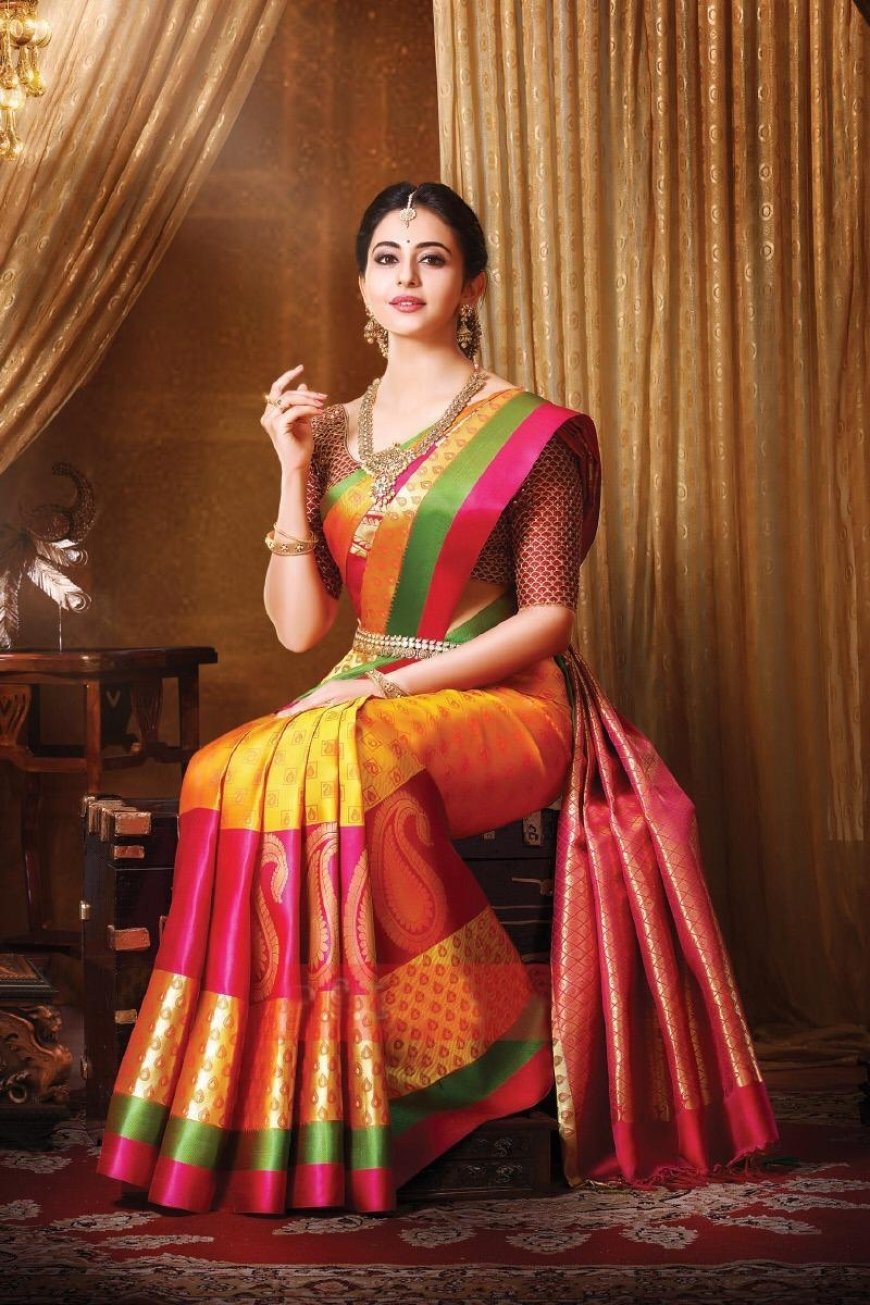Sarees for Women: Discover the Timeless Beauty of Indian Fashion
In this article, we will explore different varieties of sarees for women, the significance of sarees, the variety of styles and fabrics available, and why they continue to be a beloved choice for women in India and worldwide.

The saree, a traditional garment worn by women in India, is not just a piece of clothing—it's a symbol of grace, culture, and heritage passed down through generations. With its origins dating back thousands of years, the saree has remained a significant part of Indian fashion, evolving with time while retaining its classic charm. In this article, we will explore different varieties of sarees for women, the significance of sarees, the variety of styles and fabrics available, and why they continue to be a beloved choice for women in India and worldwide.
The Essence of the Saree
A saree is a long piece of cloth, usually measuring between five and nine yards, draped elegantly around the body. Unlike other garments, a saree doesn't have a specific fit—it can be worn in various ways, depending on the region, occasion, and personal preference. Whether it's a simple cotton saree for everyday wear or a heavily embellished silk saree for weddings, there's a style for every woman and every occasion.
One of the reasons sarees have remained popular for so long is that they are more than just a fashion statement. Every region in India has its unique style of saree, often distinguished by its weaving technique, fabric, and the motifs used. For example, the Banarasi saree from Varanasi is known for its intricate gold and silver brocade. In contrast, the Kanjeevaram saree from Tamil Nadu is famous for its vibrant colours and rich silk fabric. These regional variations make sarees a celebration of India's diversity.
The Appeal of Sarees
Sarees are loved for their timeless elegance. When a woman drapes a saree, she doesn't just wear it; she embodies centuries of tradition and culture. The saree is one of the few garments that have remained relatively unchanged despite the ever-changing fashion trends. This ability to transcend time and trends makes the saree a classic choice for women.
Moreover, sarees are incredibly flattering. They suit women of all shapes, sizes, and ages. How a saree is draped can highlight the wearer's best features, making her look and feel beautiful. For instance, the pallu (the loose end of the saree that is draped over the shoulder) can be arranged in various ways to add grace and elegance to the overall look. A saree always stands out, whether worn with a modest blouse for a traditional look or paired with a more modern top for a contemporary twist.
Varieties of Sarees
The diversity of sarees available is truly astounding. Each region in India has its distinct style, which adds to the richness of this garment. Here are some of the most popular types of sarees:
Banarasi Saree: Originating from Varanasi, the Banarasi saree is renowned for its intricate designs and luxurious silk fabric. Traditionally, these sarees were made for royalty and featured motifs inspired by Mughal art, such as floral patterns and foliate designs. The use of gold and silver threads in weaving gives these sarees a regal look, making them a popular choice for weddings and other grand occasions.
Kanjeevaram Saree: Hailing from Tamil Nadu, the Kanjeevaram saree is another iconic Indian saree. Made from pure mulberry silk, these sarees are known for their durability and vibrant colors. The borders of Kanjeevaram sarees often feature contrasting colors and intricate patterns woven using pure gold or silver threads. Due to their rich and elegant appearance, these sarees are a favorite for festivals and special occasions.
Chanderi Saree: From the heart of India, Madhya Pradesh, comes the Chanderi saree, a blend of silk, cotton, and zari. Chanderi sarees are light and airy, making them comfortable to wear even in hot weather. They are characterized by their fine texture, sheer quality, and intricate motifs such as peacocks, lotuses, and geometric patterns.
Bandhani Saree: Bandhani sarees, originating from Gujarat and Rajasthan, are famous for their tie-dye technique. The process involves tying small portions of the fabric with thread and then dyeing it, which creates unique patterns when the ties are removed. Bandhani sarees are colorful and often feature intricate designs, making them a vibrant choice for festive occasions.
Tant Saree: Originating from West Bengal, the Tant saree is a popular choice for everyday wear due to its light and breathable cotton fabric. These sarees are known for their crisp texture and typically feature bold colors and traditional motifs. Tant sarees are a staple in Bengali households, especially during the Durga Puja festival.
Why Sarees Remain Popular
The enduring popularity of sarees can be attributed to their cultural significance, versatility, and the sense of pride they evoke in the wearer. Despite the advent of modern clothing, sarees continue to hold a special place in the hearts of Indian women. They are not just worn for traditional occasions but have also found a place in contemporary fashion.
Today, many designers are reimagining the saree, experimenting with different draping styles, fabrics, and embellishments to cater to the modern woman. This has helped the saree maintain its relevance in the fashion world. Whether it's a Bollywood star walking the red carpet or a bride on her wedding day, the saree is often the garment of choice, symbolizing elegance and sophistication.
Conclusion
The saree is much more than a piece of fabric; it symbolizes India's rich cultural heritage and is a testament to the timeless beauty of Indian fashion. From the Banarasi saree's intricate weaves to the Bandhani saree's vibrant patterns, each type of saree tells a story of tradition, craftsmanship, and elegance. In a world where fashion trends come and go, the saree remains a constant, cherished by women across generations.
What's Your Reaction?


















